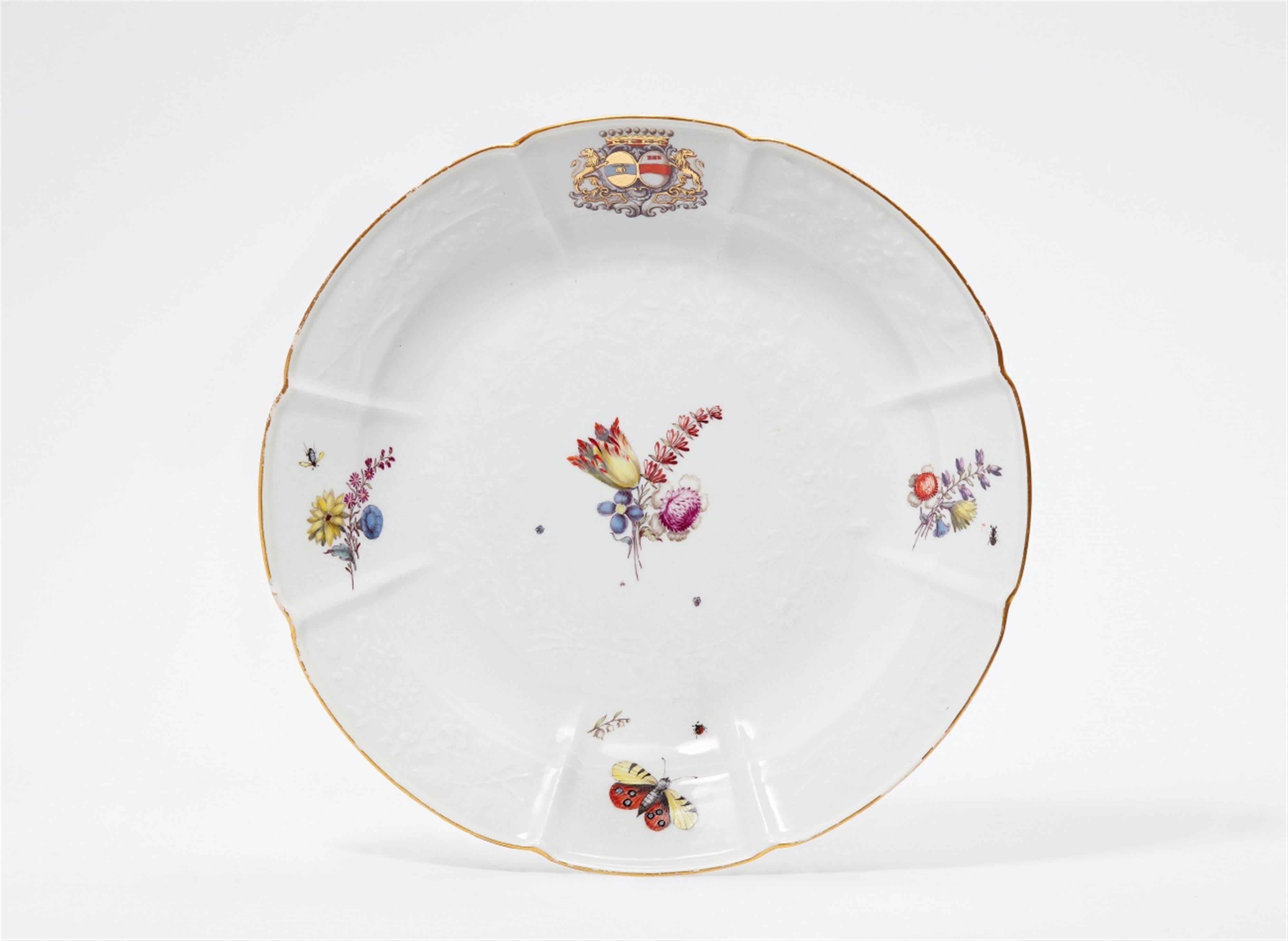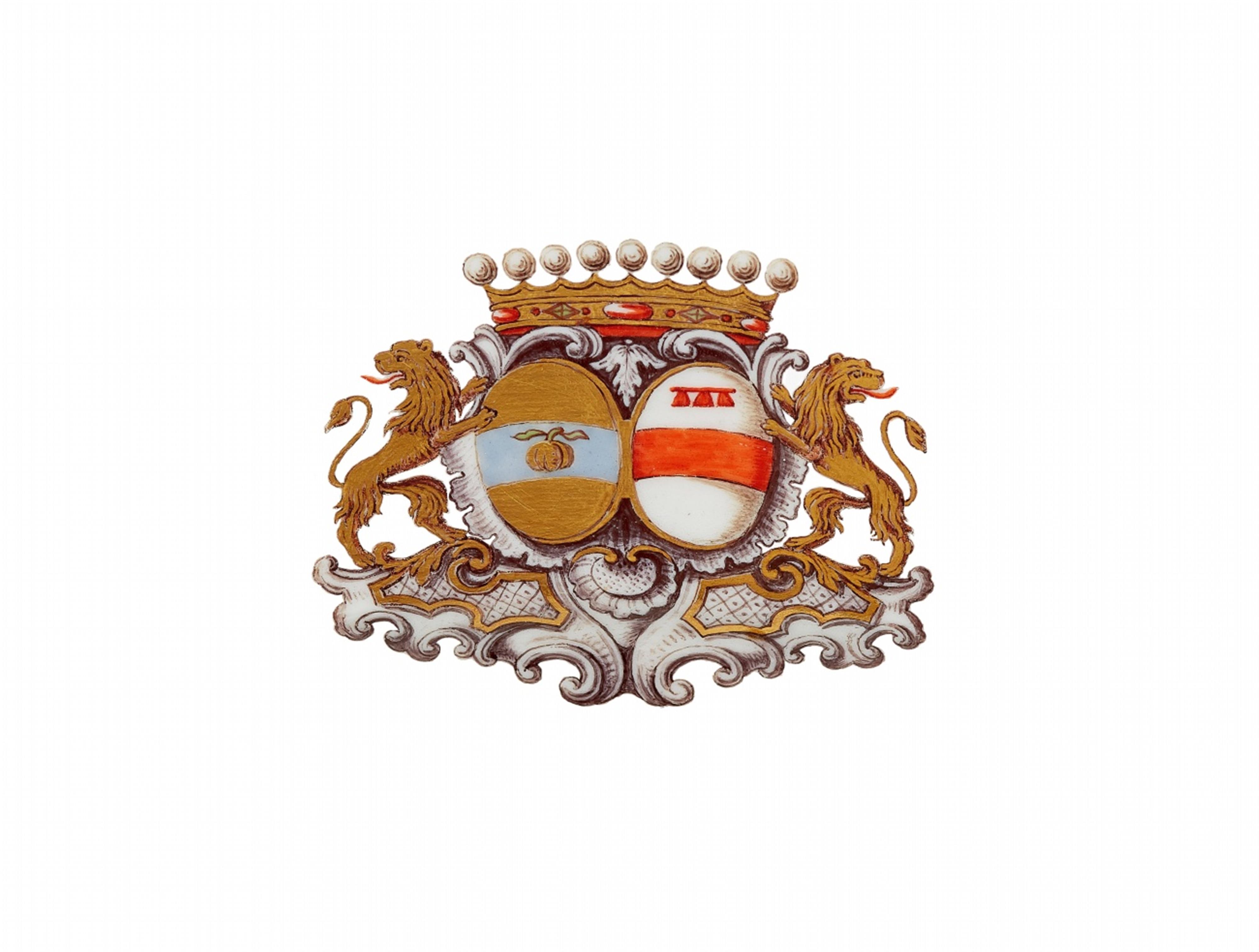A round Meissen porcelain platter from the Pâris de Monmartel-Béthune service
Gotzkowsky model. The border painted with the arms of alliance supported on a rocaille bracket by two lions. The well decorated with two small bouquets of woodcut style flowers. Some small insects and flowers painted over firing flaws. Blue crossed swords mark, dreher's number 20, incised //. A rim chip at 9 o'clock, ash flecks. D 30.5 cm.
1746.
The French banker Jean Pâris de Monmartel (1690 - 1766) married his third wife, Marie Armande de Béthune (1709 - 1772), on 16th February 1746. The rumour was passed down in the family that the Meissen service was given to them as a wedding present by the Polish King Stanislav Leszczynski. The service was actually a gift from the Saxon King Augustus III. Selma Schwartz and Jeffrey Munger researched the service for the catalogue "Fragile Diplomacy" and were able to uncover an exchange of letters from 1749 which allowed the patron and the recipient of the service to be clearly identified. Prince Hermann Moritz of Saxony, the Maréchal de Saxe, described Jean Pâris de Monmartel as being so influential that he was able to keep the state affairs running.
De Monmartel was so proud and delighted by the service that he still kept it in his office under lock and key three years after receiving it, and he was the only person allowed to handle the pieces. The service remained in his private chambers until his death in 1766. At that time, it comprised 72 dinner plates, 24 soup bowls, 60 platters, four round and four oval tureens, twelve salad bowls, five sauce boats, 20 compote dishes and four leaf-shaped dishes. This was an average size for a courtly service at the time.
Literature
For the history of the service, cf.: Schwartz/Munger, Gifts of Meissen Porcelain to the French Court, 1728 - 50, in: Cassidy-Geiger (ed.), Fragile Diplomacy. Meissen Porcelain for European Courts ca. 1710 - 63, New Haven-London 2007, p. 147 f.
An identical platter in Sammlung Hoffmeister, vol. II, Hamburg 1999, no. 364.




